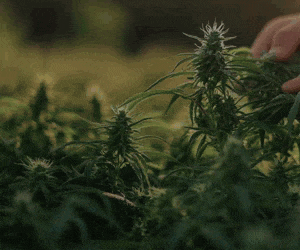Politics
DEA Moves To Boost Production Of Psychedelics To Explore Therapeutic Potential For PTSD And Depression

The Drug Enforcement Administration (DEA) is proposing to raise the quota for legal production of multiple psychedelics—including psilocybin, 5-MeO-DMT and methylone—for research purposes in 2026.
In a notice published in the Federal Register on Friday, DEA said it is moving to boost the quotas for the psychedelics substances so researchers can study whether they could serve as “potential treatment of conditions such as post-traumatic stress disorder (PTSD) and depression.”
The proposed production goal for psilocybin rose from 30,000 grams this year to 40,000 grams in 206, while the psilocyn quota increased from 36,000 grams to 48,000 grams.
DEA also evidently sees ample potential for research into lesser-known psychedelics as well.
For example, it is proposing to nearly triple the quota for 5-MeO-DMT—from 11,000 grams this year to 30,000 grams in 2026.
Just four years ago, in 2021, the agency only called for 35 grams of the psychedelic. That grew to 2,550 grams in 2022 and 11,000 grams the next year, where it’s stayed until this latest proposal.
And for methylone, an MDMA-like compound, the increase is even more dramatic: In 2025, the agency set a goal of 5,200 grams, but in 2026 it wants 30,000 grams produced.
Like 5-MeO-DMT, the production goal for methylone was minuscule four years ago, when DEA proposed the manufacturing of just 40 grams of the substance. The same quota was set in 2022 before increasing to 5,200 grams for each subsequent year until this latest proposal.
Over recent years, DEA has generally ramped up production goals for marijuana and certain psychedelics as interest in their therapeutic potential has grown within the public and scientific community.
The proposed 2026 quotas for cannabis, THC, ibogaine, MDMA, LSD and mescaline were not adjusted since last year, however.
“These proposed 2026 quotas reflect the quantities that DEA believes are necessary to meet the estimated medical, scientific, research, and industrial needs of the United States, lawful export requirements; and the establishment and maintenance of reserve stocks,” DEA said.
The agency said that, in setting the quotas, it took into account several factors, including “projected demand for such class as indicated by procurement quotas,” information obtained by federal health agencies such as the Food and Drug Administration (FDA) and “other factors affecting medical, scientific, research, and industrial needs in the United States and lawful export requirements.”
The Controlled Substances Act (CSA) requires the attorney general to set APQs for Schedule I and Schedule II drugs each year. Notably, that would mean marijuana would not be part of this annual research production list if President Donald Trump follows through on a campaign pledge to move cannabis from Schedule I to Schedule III of the CSA.
DEA said in a notice last month, however, that the rescheduling process remains stalled, despite the head of agency’s prior commitment to senators that he would prioritize the issue if confirmed for the role.
Also, earlier this month, a lawyer for DEA faced a grilling by a federal appeals court over delays in a request for a religious group to use the psychedelic ayahuasca in their practice—a complaint similar to one that marijuana reform advocates have vented over decades amid repeated efforts to end federal cannabis prohibition.
Photo courtesy of Dick Culbert.



